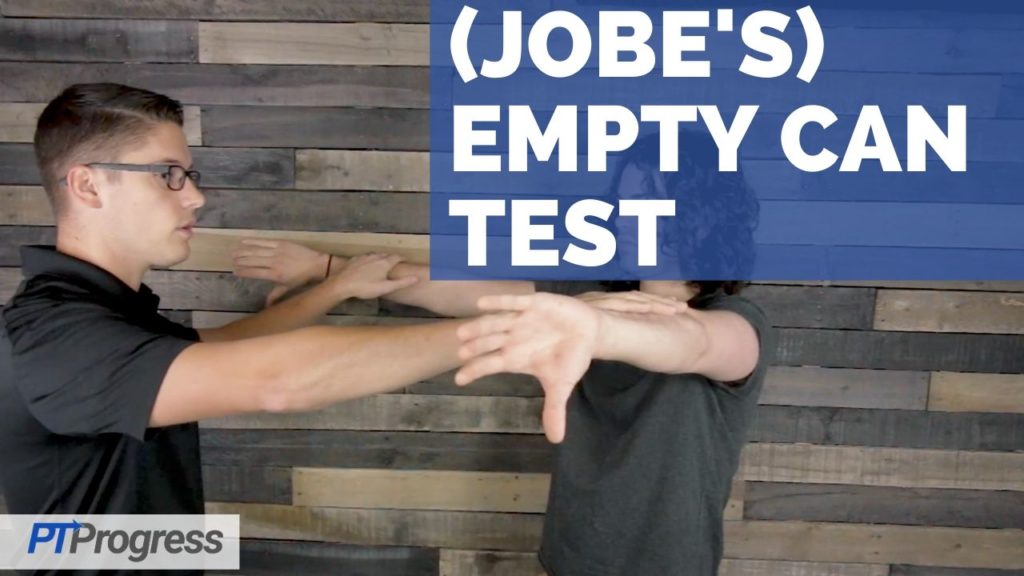
The empty can test or Jobe’s test is used to identify subacromial impingement as well as the integrity of the supraspinatus muscle. The test should be performed bilaterally to compare the stability and strength of the patient’s shoulders.
How to Perform Empty Can Test
Position of Patient:
- Position the patient in sitting or standing with
- Elbow fully extended and elevated to 90 degrees in scapular plane,
- Internally rotate shoulder so thumb points to ground.
Performance: The examiner will apply a downward force to the patient’s wrist at the 90-degree position while the patient attempts to resist.
This test is often performed by applying pressure to both arms in the testing position as a way to visually compare unilateral weakness due to impingement or supraspinatus compromise.
How to Interpret Empty Can Test
Positive Finding: The test is considered positive if weakness is noted compared to the opposite arm.
Test Accuracy / Reliability / Evidence:
Sensitivity and Specificity
Sensitivity = 0.69
Specificity = 0.62
+LR = 1.8
– LR = 1.5
Source: Alqunaee M, Galvin R, and Fahey T: Diagnostic accuracy of clinical tests for subacromial impingement syndrome: a systematic review and meta-analysis. Arch Phys Med Rehabil 2012; 93: pp. 229-236
The empty can test or Jobe’s test is used to identify subacromial impingement as well as integrity of the supraspinatus muscle. The test should be performed bilaterally to compare the stability and strength of the patient’s shoulders.
To perform the empty can test, position the patient in either standing or sitting with their elbow full extended at 90 degrees and in the scapular plane with shoulder internally rotated so the patient’s thumb is pointed down to the floor. Instruct the patient to hold this position and apply resistance downward.
A positive test occurs when weakness is noted on the affected side as compared to the unaffected shoulder.
View more special tests here: Shoulder Special Tests

